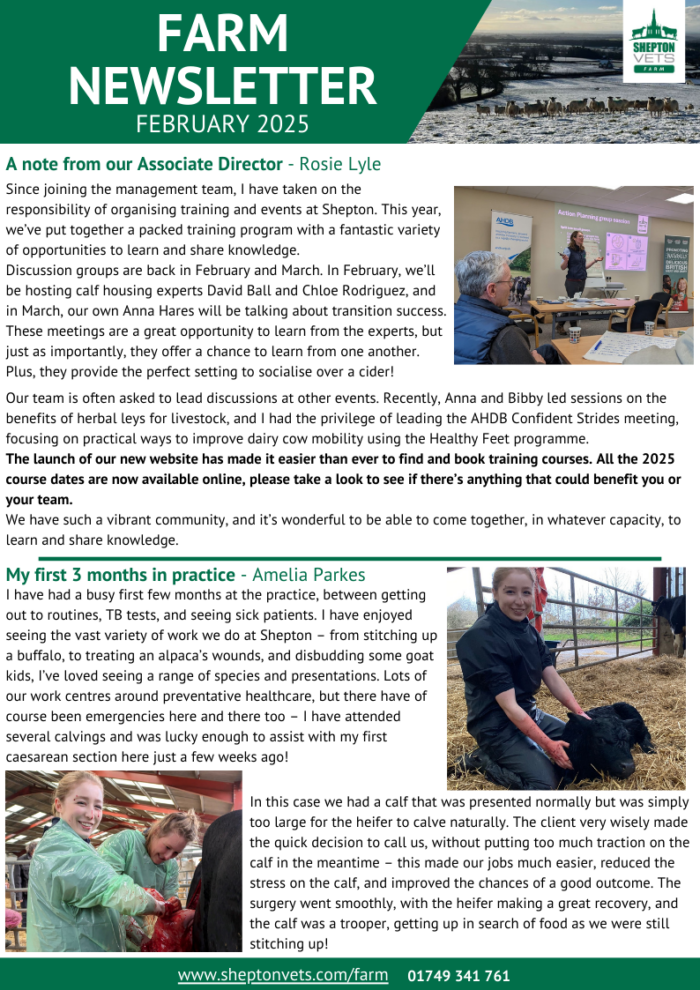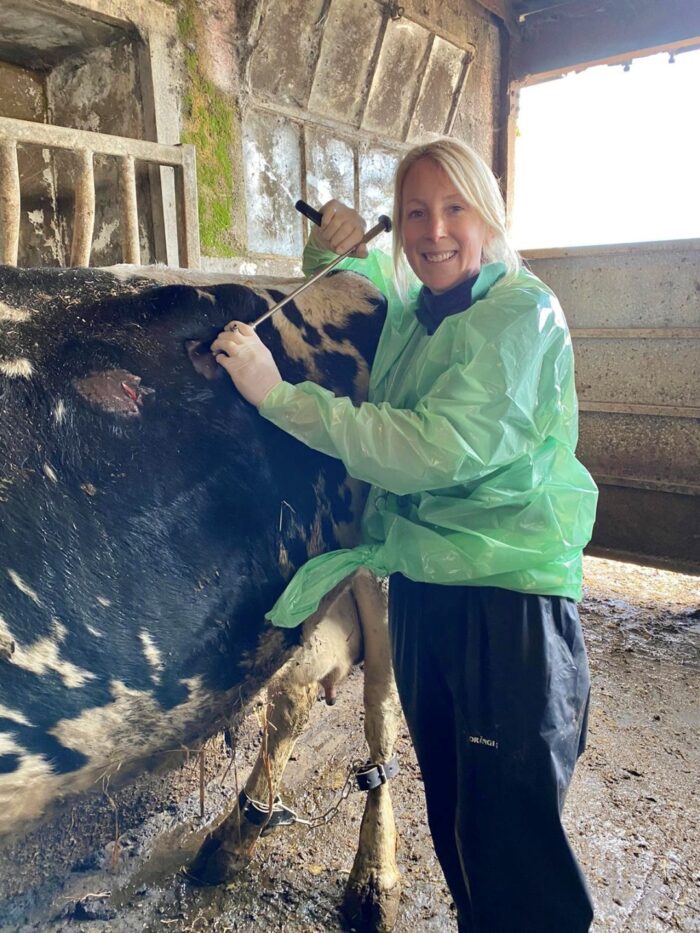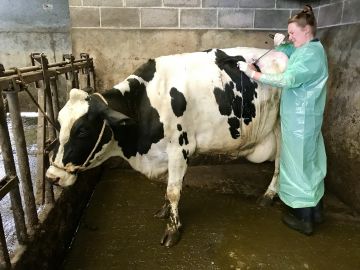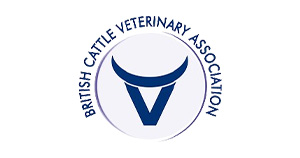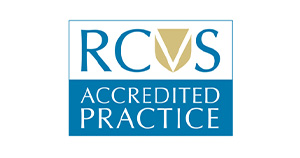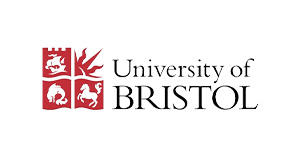Laparoscopic LDA
Laparoscopic LDA (Left Displaced Abomasum) corrections are carried out on farm by our team of experienced laparoscopic surgeons. This is a type of keyhole surgery that quickly and accurately corrects LDA’s. We were the first practice in the UK to introduce this way of correcting LDA’s in 2012 and since then we have corrected over 1000 LDA’s laparoscopically. We have 4 trained laparoscopic surgeons in the team and 2 laparoscopes.
We have 4 trained laparoscopic surgeons in the team and 2 laparoscopes.

Anna Hares

Rosie Lyle
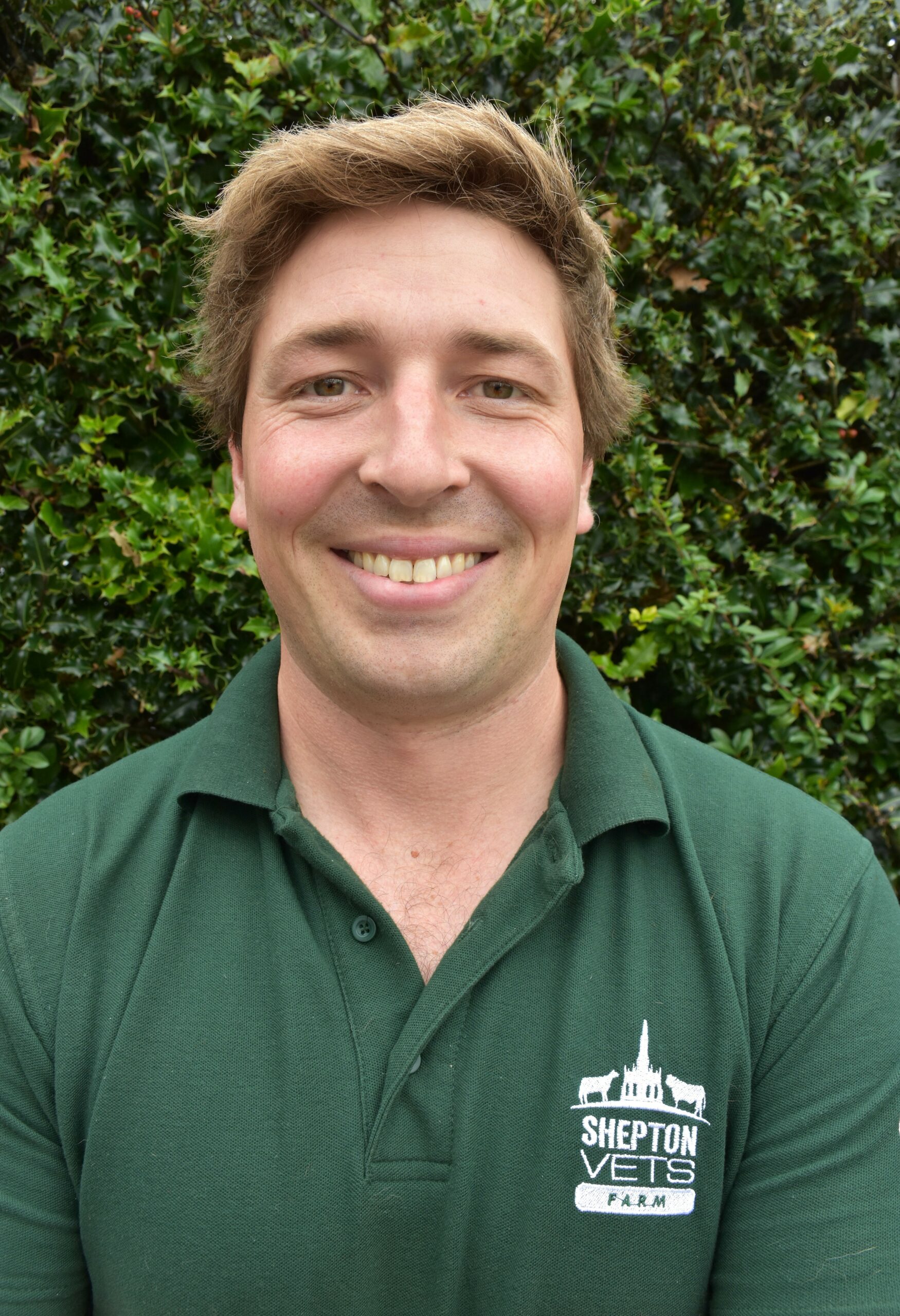
Charlie Neale
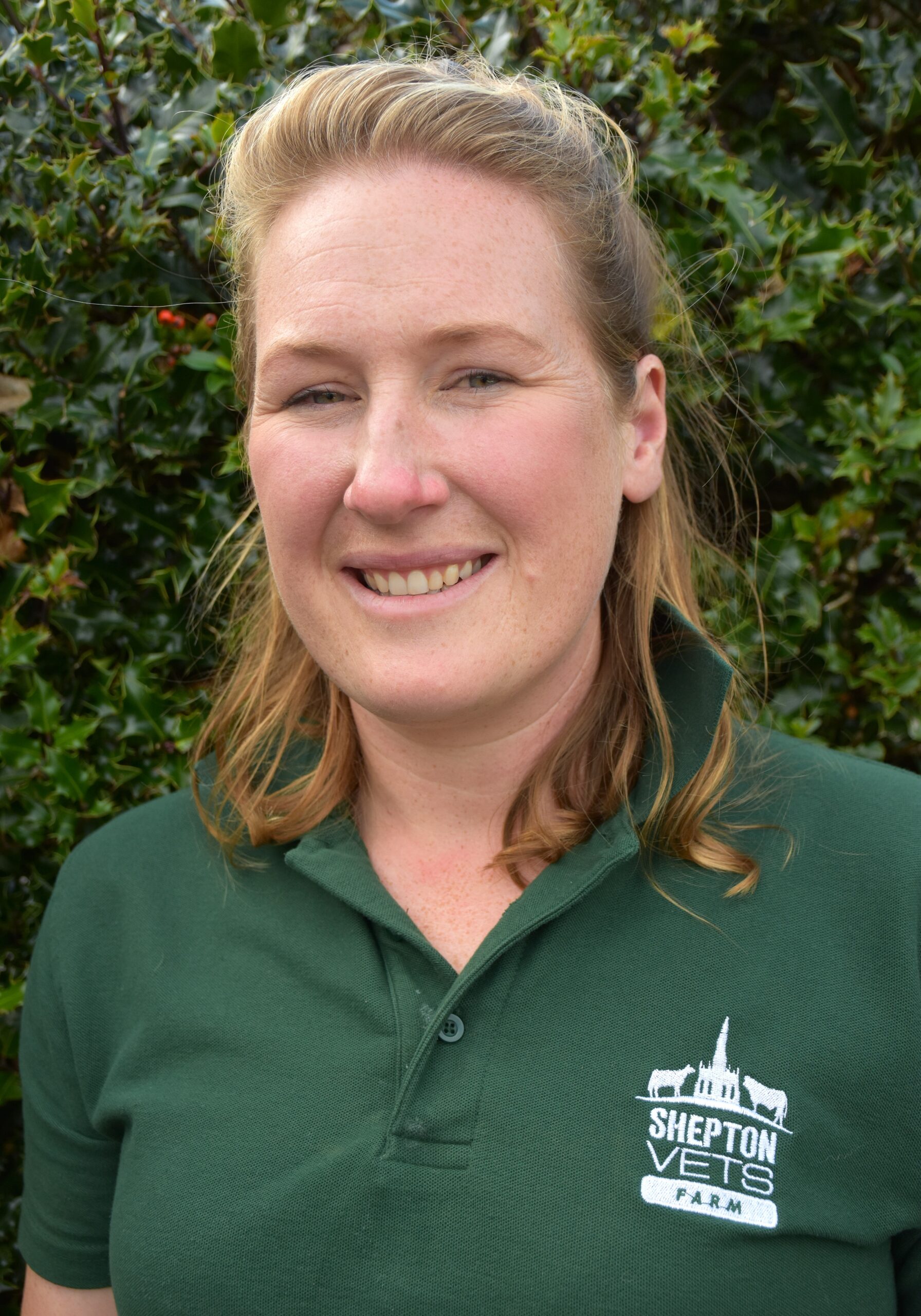
Bibby Thomas
Benefits of the laparoscope
- Minimally invasive for the cow – we only need to make two very small holes in the cow’s side (9mm and 13mm), recovery times for the cow are usually much quicker than those seen with other methods of LDA correction.
- From starting to prepare the cow for surgery to completion it takes around 50 minutes.
- It is accurate – this is because we can look at the cow’s abomasum with the camera (laparoscope). Some methods of LDA correction are blind, recurrence of an LDA after a laparoscope is very rare. The camera also allows us to check for peritonitis, cows that have this may benefit from longer courses of antibiotics after surgery, or in very severe cases we would recommend culling.
- Reduces medicine use – cows that do not have concurrent disease may not require antibiotics as this is a keyhole surgery and infection risk is low.
- The cow remains standing – there is no requirement to roll the cow making this technique appealing to farms where labour is short.

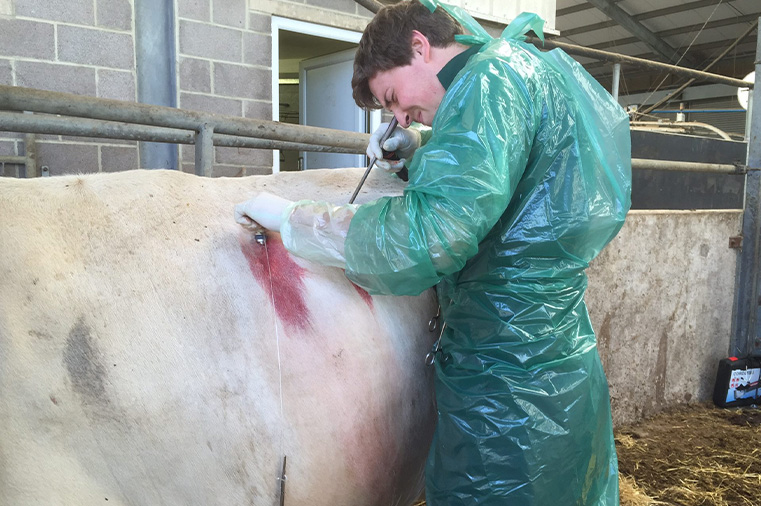
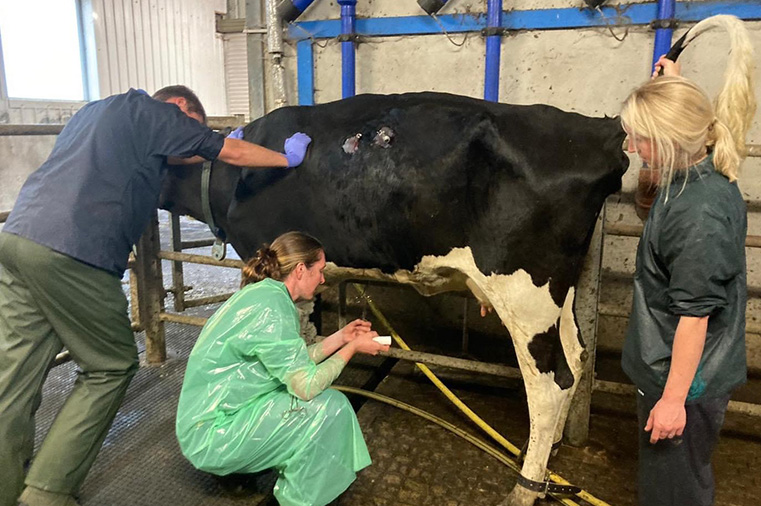
LDA’s at Shepton Vets
- When we diagnose an LDA on farm we will discuss with the client how they would like the LDA corrected. We correct approximately 70% of LDA’s using the laparoscope. We also offer the Grymer Sterner toggle if the cow is of low value or if this is the clients preference. Occasionally we will operate and open cows up on the right-hand side (right sided laparotomy).
- For cows that are having laparoscopic LDA corrections preparation for surgery involves restraining the cow on a halter so that her whole left side is accessible. We will then give the cow her medicines including an epidural, a small amount of sedation, local anaesthetic, pain relief and in some cases antibiotics. We will apply shackles to the cow.
- We clip and scrub 2 small areas over the cow’s ribs on her left side.
- Two very small incisions are made (9mm and 13mm). One is used to insert the small camera (laparoscope) and view the abomasum, the other is used as a portal for the introduction of surgical instruments that allow us to place a toggle into the abomasum. Following toggle insertion, the abomasum is deflated, it sinks back into the correct anatomical position. The toggle is then fixed through the body wall ventrally and this secures the abomasum in its correct position.
- We then use the camera to check the abdomen for peritonitis. There is no need for the cow to have stitches as the holes are very small.
- Cows are usually then given ruminal fluids and propylene glycol.
- We run a surgical audit to monitor outcomes of all operations done on farm.
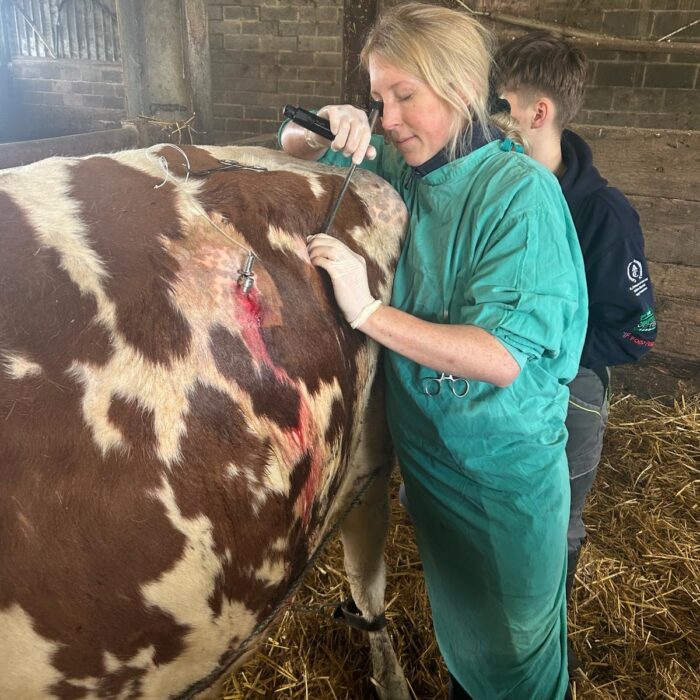
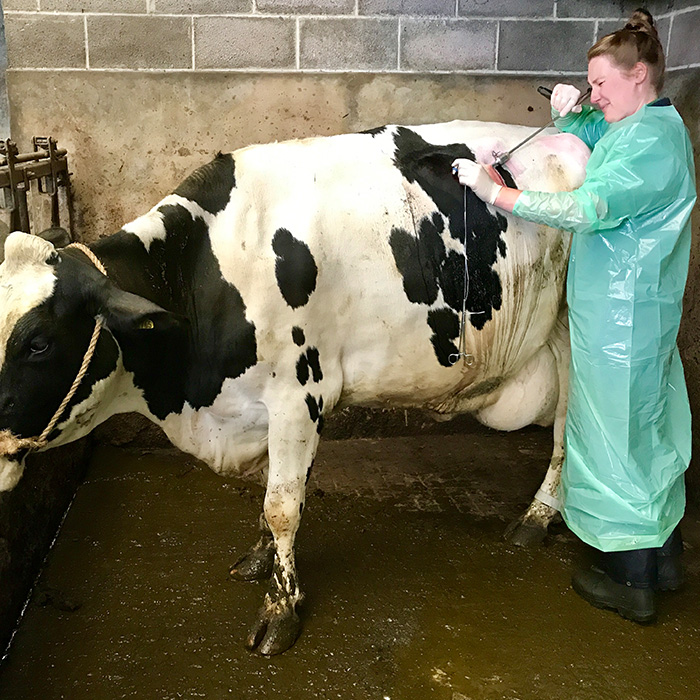

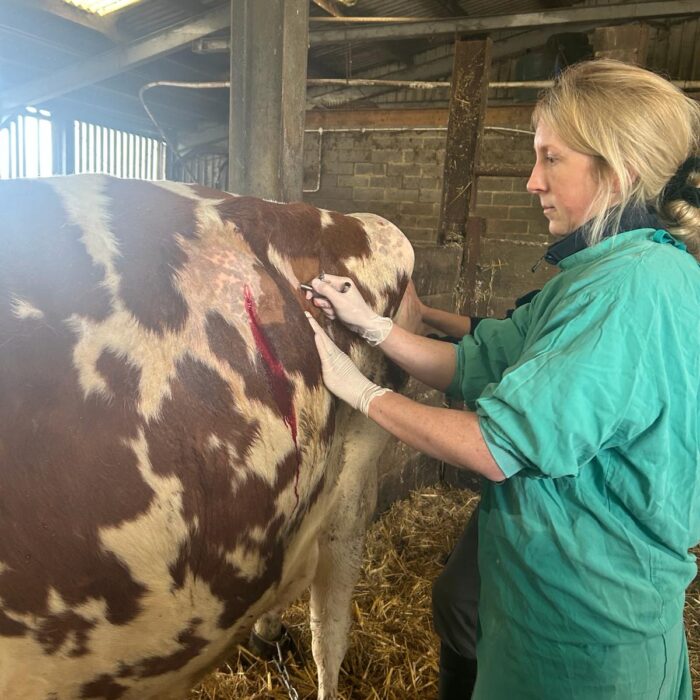
“I first started using the scope for LDA’s when Shepton Vets first introduced it in 2012. I was amazed at the recovery speed of the cow after the operation. Often, as soon as the cow goes back to the yard, she’s going straight for her food. I have found a vast improvement in recovery rates using the scope. I would never go back to opening a cow up to correct an LDA again. There isn’t the need to use as much antibiotic either which helps lower our antibiotic usage.”
Phil Langley, Barrow vale Farm


